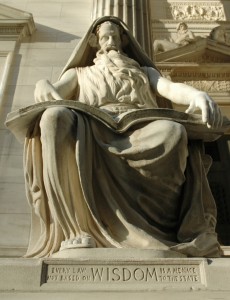We all learned in school—or at least in Schoolhouse Rock!—that the U.S. Supreme Court, sitting atop one of the three co-equal branches of government, interprets the laws which are passed by Congress, and enforced by the President. We also know that the Court performs this function by hearing cases and issuing rulings. When a party to a case believes that a lower court has misapplied a law relating to a federal issue, that party can petition the U.S. Supreme Court to consider the matter and make a final determination of what the law actually means.
But the Supreme Court also performs a lesser-known function that profoundly influences the course of day-to-day practice in the nation’s courts. The Rules Enabling Act authorizes the Court to issue rules that govern practice and procedure throughout the entire federal court system. Through these rules, the Court has standardized the functional and mechanical processes that relate to everything from the requirements for filing suit, to the admissibility of evidence, to the required format of appellate briefs. Furthermore, most state courts and other tribunals use the federal rules as a basis for the formulation and interpretation of their own local rules. The rules of practice promulgated by the U.S. Supreme Court are the primary reference for legal procedure in America.
The Court maintains five sets of rules that govern the various aspects of federal practice. They are: the Federal Rules of Civil Procedure, the Federal Rules of Criminal Procedure, the Federal Rules of Evidence, the Federal Rules of Appellate Procedure, and the Federal Rules of Bankruptcy Procedure. The Court periodically amends the rules, usually in April. You can find links to this year’s amendments on the Court’s Order List.
The rules are drafted by the Judicial Conference, a body made up of the Court’s Chief Justice, the chief judge of each of the federal circuit courts, a judge from a district court from each of the regional circuits, and the chief judge of the U.S. Court of International Trade. Congress retains the authority to veto any rule promulgated by the Court.
And yes, the Court also issues its own Rules governing practice before the Supreme Court itself. These rules describe the unique formatting and composition requirements for documents filed with the Court, set out the due dates of various filings, and generally establish the processes and functions of the Court.
At Cockle Legal Briefs, we are experts in the intricacies of procedure in the U.S. Supreme Court, and in the federal circuit courts. If you have any questions about how the federal rules apply to your case, give us a call.

